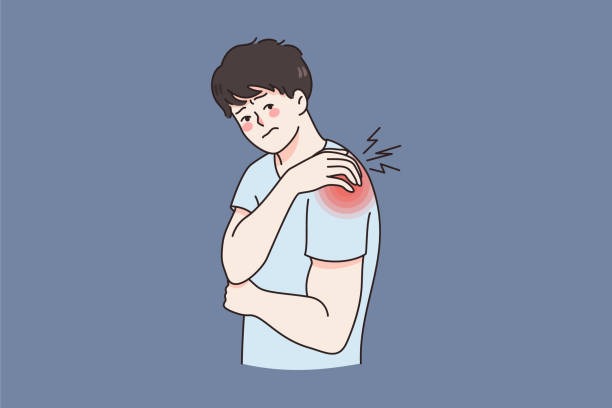Muscle pain, or myalgia, is a common complaint that affects many people. It can range from mild to severe and can involve any muscle in the body. Muscle pain can have various causes, such as injuries, infections, diseases, or medications. Muscle pain can also affect your daily activities, mood, and quality of life.
In this blog post, we’ll explain what muscle pain is, what causes it, what symptoms it may have, and what treatment options are available. We’ll also share some tips and resources to help you prevent and manage muscle pain and the conditions that cause it.
What is muscle pain?
Muscle pain is a sensation of discomfort, soreness, stiffness, or tightness in one or more muscles. It can occur in any part of the body where there are muscles, such as the arms, legs, back, neck, chest, abdomen, or face.
Muscle pain can be acute or chronic. Acute muscle pain is sudden and usually lasts for a short time. It often results from overuse, injury, or infection. Chronic muscle pain is persistent and lasts for a long time. It often results from an underlying condition or disease.
Muscle pain can be localized or widespread. Localized muscle pain affects a specific muscle or group of muscles. It often results from overuse, injury, or inflammation. Widespread muscle pain affects multiple muscles throughout the body. It often results from systemic conditions or diseases that affect the whole body.
What causes muscle pain?
Many factors can cause muscle pain, including:
• Injuries: Muscle injuries can occur due to trauma, such as falls, accidents, sports, or violence. They can also occur due to overuse or repetitive strain, such as lifting heavy objects, working out too hard, or performing the same motion repeatedly. Muscle injuries can cause tears, sprains, strains, bruises, or contusions in the muscle fibers or connective tissues.
• Infections: Muscle infections can occur due to bacteria, viruses, fungi, parasites, or toxins that invade the muscle tissue or the surrounding areas. They can cause inflammation, swelling, redness, warmth, pus formation, fever, or chills in the affected muscles. Some examples of infections that can cause muscle pain are influenza (flu), Lyme disease (tick-borne infection), trichinosis (parasitic infection from undercooked meat), tetanus (bacterial infection from contaminated wounds), or cellulitis (skin infection).
• Diseases: Muscle diseases are conditions that affect the structure or function of the muscles. They can cause weakness, atrophy (shrinkage), spasm (involuntary contraction), cramp (painful contraction), stiffness, or rigidity in the affected muscles. Some examples of diseases that can cause muscle pain are myositis (inflammation of the muscles), muscular dystrophy (genetic disorder that causes progressive muscle weakness and wasting), fibromyalgia (chronic condition that causes widespread pain and tenderness), polymyalgia rheumatica (inflammatory disorder that causes muscle pain and stiffness in older adults), or rhabdomyolysis (breakdown of damaged muscle tissue that releases harmful substances into the bloodstream).
• Medications: Muscle pain can be a side effect of certain medications that affect the muscles directly or indirectly. Some medications can cause inflammation, damage, or breakdown of the muscle tissue or fibers. Some medications can interfere with the blood supply, nerve signals, or metabolism of the muscles. Some examples of medications that can cause muscle pain are statins (cholesterol-lowering drugs), corticosteroids (anti-inflammatory drugs), antimalarials (drugs used to prevent or treat malaria), antibiotics (drugs used to treat bacterial infections), antipsychotics (drugs used to treat mental disorders), or chemotherapy drugs (drugs used to treat cancer).
What are the symptoms of muscle pain?
The symptoms of muscle pain depend on the cause, severity, and location of the pain. Some common symptoms of muscle pain are:
• A dull, aching, or throbbing sensation in the affected muscles
• A sharp, stabbing, or shooting sensation in the affected muscles
• A feeling of tightness, stiffness, or spasm in the affected muscles
• A reduced range of motion, flexibility, or strength in the affected muscles
• A difficulty performing normal activities, such as walking, lifting, or reaching
• A swelling, redness, warmth, or bruising in the affected muscles
• A fever, chills, nausea, vomiting, or rash if the muscle pain is due to an infection
• A weakness, numbness, tingling, or paralysis if the muscle pain is due to a nerve compression or damage
What are the treatment options for muscle pain?
The treatment options for muscle pain depend on the cause and severity of the pain. Some common treatment options for muscle pain are:
• Self-care: Self-care measures can help relieve mild to moderate muscle pain caused by overuse
or injury. Some self-care measures include:
• Resting the affected muscles and avoiding activities that worsen the pain.
• Applying ice packs or cold compresses to reduce inflammation and swelling.
• Applying heat packs or warm compresses to relax tense or spasming muscles.
• Taking over-the-counter pain relievers such as ibuprofen or acetaminophen to reduce inflammation and discomfort.
• Taking over-the-counter anti-inflammatory drugs such as aspirin or naproxen to reduce inflammation and swelling.
• Taking over-the-counter muscle relaxants such as cyclobenzaprine or methocarbamol to relieve spasm or stiffness
• Stretching gently and gradually to improve flexibility and range of motion
• Massaging gently and firmly to improve blood circulation and ease tension
• Medical care: Medical care may be needed for severe persistent or recurrent muscle pain caused by an underlying condition or disease. Some medical care options include:
• Seeking emergency care if you have signs of a serious condition such as difficulty breathing swallowing moving chest pain irregular heartbeat confusion severe headache high fever or loss of consciousness
• Consulting your doctor if you have signs of an infection such as rash tick bite redness swelling pus formation fever or chills
• Consulting your doctor if you have signs of a disease such as weakness atrophy spasm cramp stiffness rigidity numbness tingling paralysis or weight loss
• Consulting your doctor if you have signs of a medication side effect such as dark urine muscle tenderness muscle weakness muscle fatigue muscle cramps muscle spasms muscle stiffness muscle rigidity muscle swelling muscle bruising muscle bleeding muscle inflammation muscle damage muscle breakdown muscle necrosis
• Getting a diagnosis through a physical examination medical history blood tests urine tests imaging tests electromyography biopsy or genetic testing
• Getting a treatment based on your diagnosis through prescription medications supplements injections infusions surgery physical therapy occupational therapy speech therapy cognitive behavioral therapy biofeedback acupuncture or alternative therapies Conclusion Muscle pain is a common complaint that affects many people. It can range from mild to severe and can involve any muscle in the body. Muscle pain can have various causes, such as injuries, infections, diseases, or medications. Muscle pain can also affect your daily activities, mood, and quality of life. We hope this blog post has helped you understand what muscle pain is and how to relieve it. Remember that muscle pain is not always serious but it may indicate an underlying problem that needs medical attention. If you have any questions or concerns about your muscle pain or health please contact your doctor or a physical therapist for professional advice.


